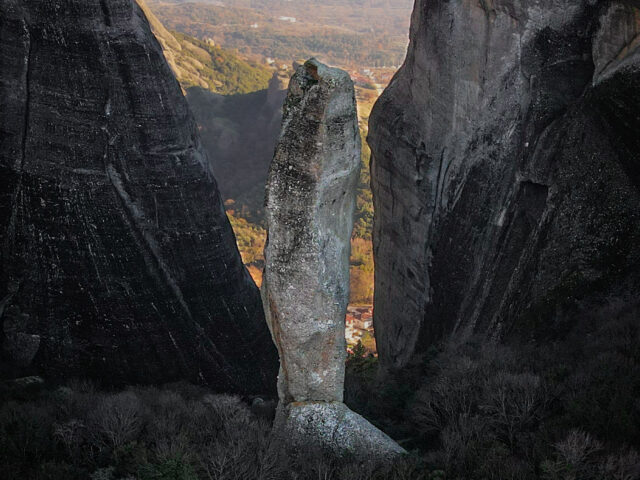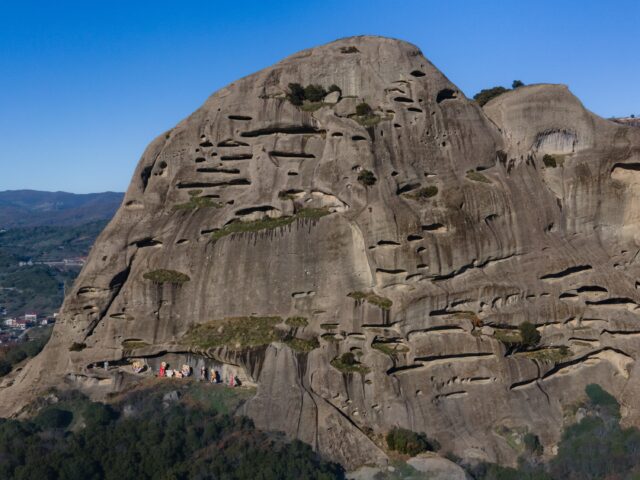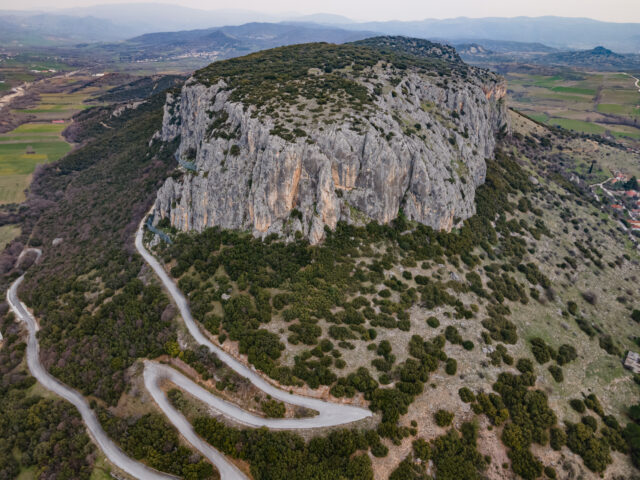Category: Geosites of Meteora – Pyli Geopark
The geosites of the Geopark combine unique geological history, natural beauty, rich biodiversity and cultural significance.
Geological Geosites
Natural monuments that highlight geological processes, such as the imposing cliffs of Meteora, the gorges and river valleys.
Sites of archeological interest
Sites that bear witness to man’s primeval relationship with space, such as caves, archaeological sites and recorded prehistoric traces.
Sites of Environmental Interest
Areas of rare natural beauty and biodiversity, hosting unique ecosystems and species of flora and fauna.
Sites of Historical – Cultural Interest
Points of particular cultural importance, such as historical monuments, traditional settlements, monasteries and myths associated with the place.
Among the rock formations of Meteora, an impressive styloid rock formation that resembles a stone needle stands out. “Adrachti” (Needle or Spindle) as it has been known through recent history, is a single pillar located south of Kastraki among the large rocks of Meteora, such as Modi and Agia. Meteora…
View moreAt the western exit of Kalambaka city towards Kastraki, we encounter the rocks “Amparia” and “Bandova” of the Meteora complex. These two rocks are part of the Meteora Conglomerates, which are 10-20 million years old. On the surface of these two rocks we observe the characteristic ellipsoidal cavities called “tafoni”….
View moreTo the east of the Kalambaka plain, the impressive rock of Theopetra dominates above the homonymous village. The rock of Theopetra consists of hard limestone rocks of Cretaceous age which have been deposited over softer and more susceptible to erosion ophiolite rocks of Jurassic age. The different erosion of the…
View moreSEARCH
Looking for more?
Cras rutrum tellus et vulputate accumsan. Sed id ultricies mauris, nec semper nisl.



